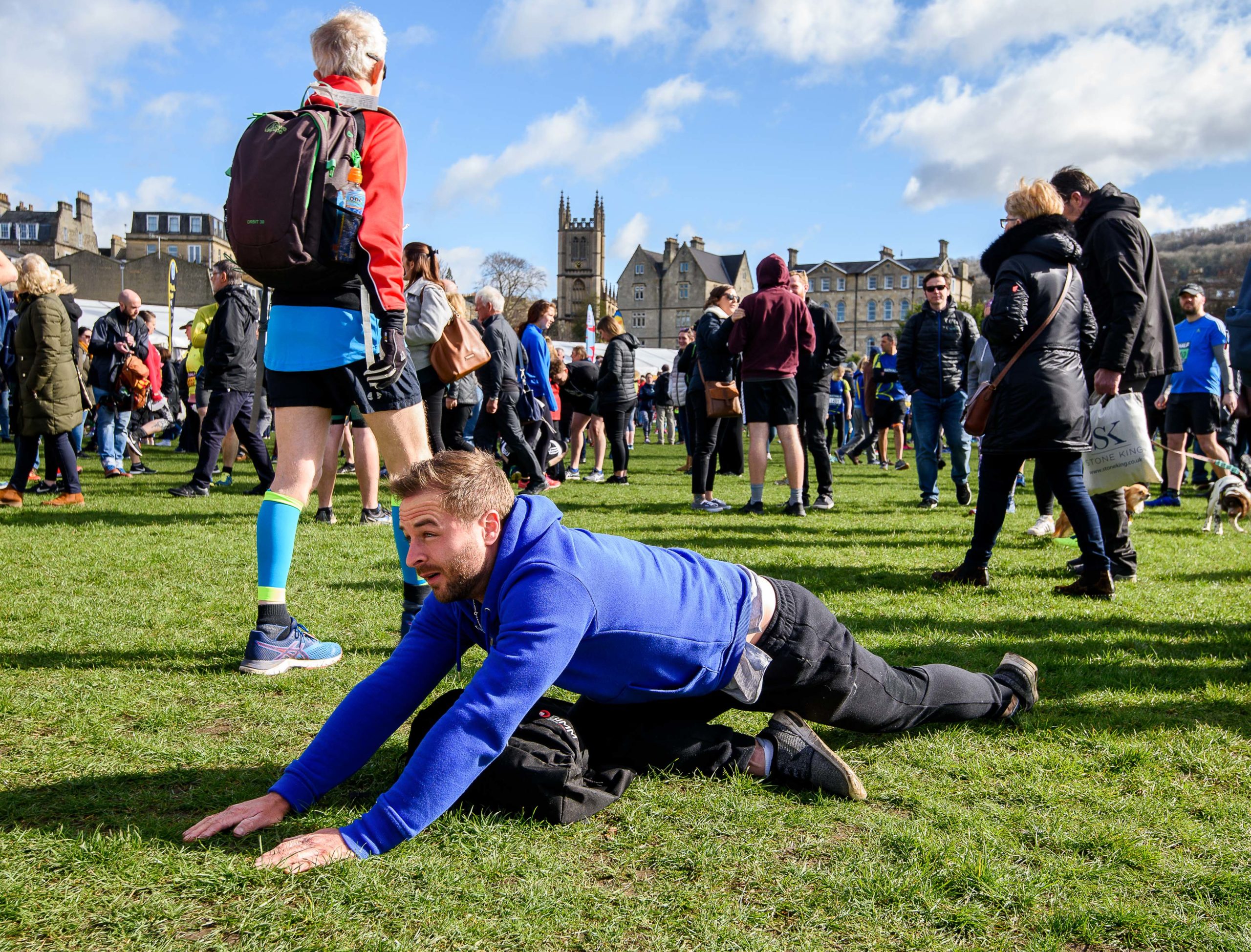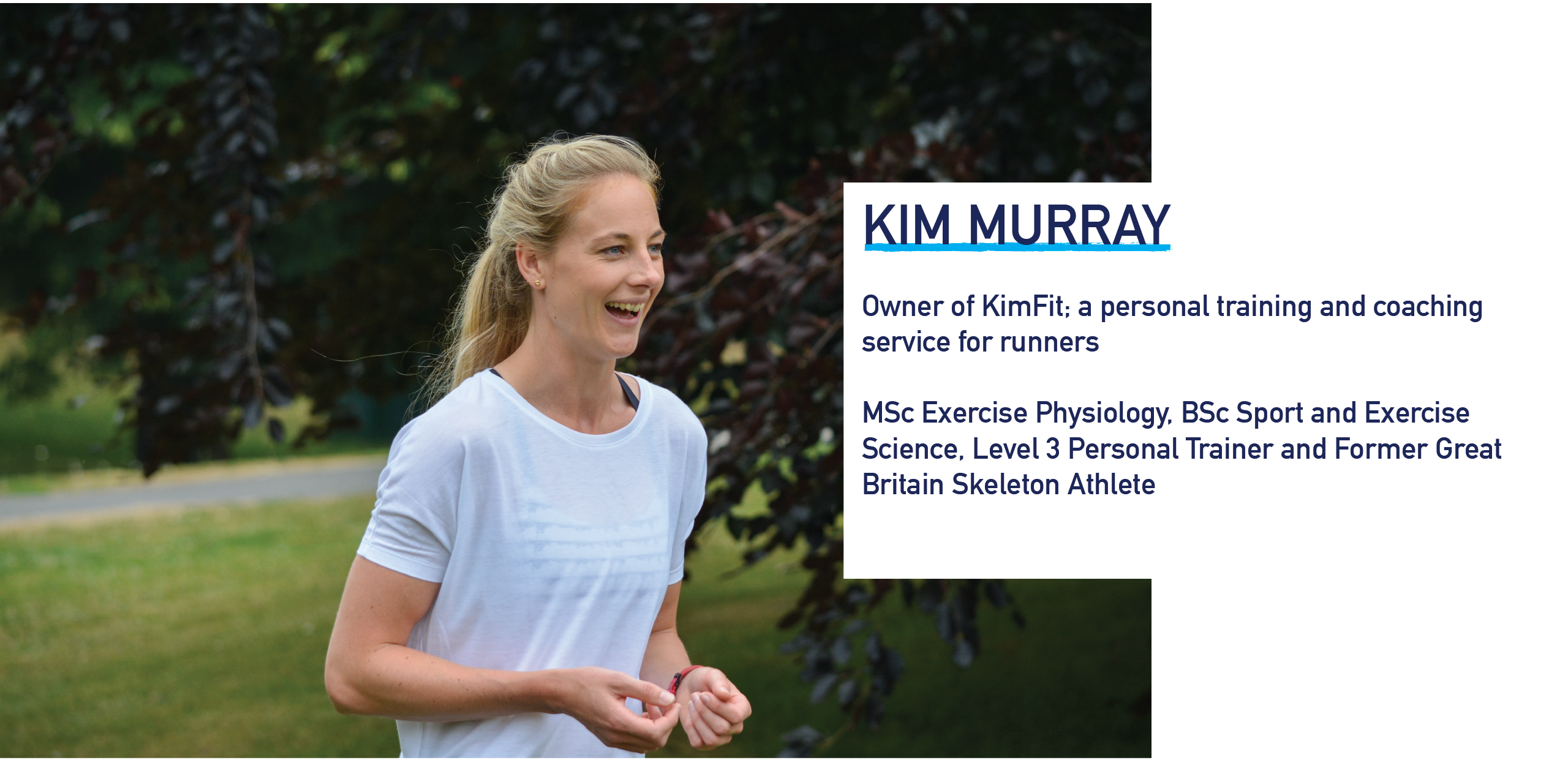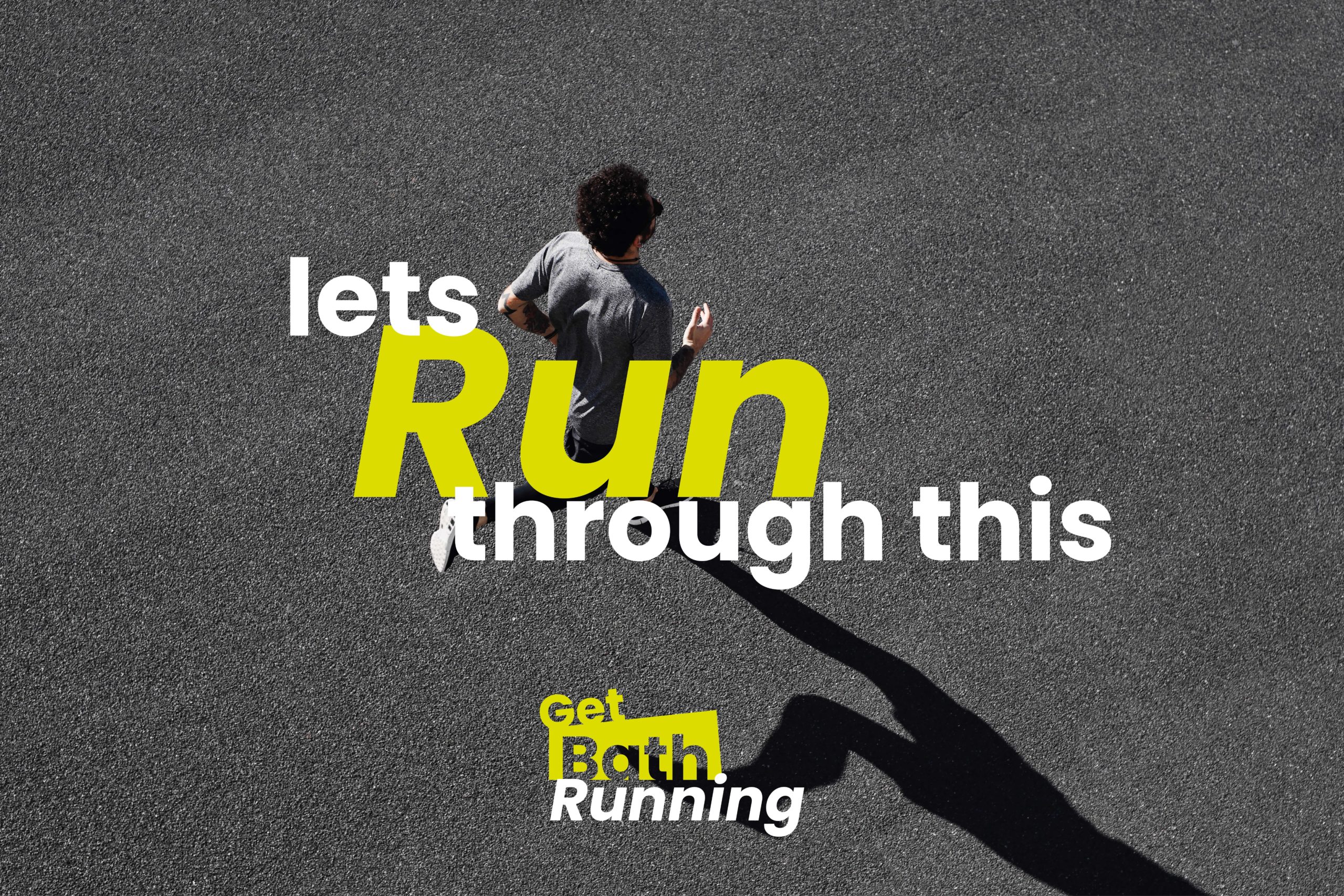So, you’ve entered the Virtual Bath Half? Good for you! Entering races is a great way to maintain motivation to keep active in these difficult times.
You might now be feeling a little apprehensive about training to run 13.1 miles. Don’t worry, I am here to help! Read on for my top tips for training, recovery and motivation when it comes to preparing to run a half-marathon.
Hint: rest days are a must!

I like to use the acronym ‘KISS’ when planning training. It stands for ‘keep it simple stupid’.
Your half-marathon training needn’t be fancy; but it does require prior thought and planning.
If you’re a beginner or intermediate runner then I would recommend building up to 3-4 runs a week. Gradually increase the frequency, intensity and duration of sessions rather than diving in at the deep end and risking injury.
I would recommend building up to the following:
- 1 x long, easy pace run (build up to approx. 10 miles)
- 1-2 x short, easy pace run (approx. 30 min)
- 1 x interval session (long or short intervals around or above race pace)
On top of this, it is super important to include strength training in your plan. This can be performed at home using bits you’ve got around the house as resistance. Complete 1-2 sessions a week focussing on building calf, single-leg and core strength. The rule with strength training is to make sure workouts get harder over time and that you’re moving with control and good form. Click here for some exercise suggestions.

Knowing what to include is the easy bit. Fitting it in around your life and making sure sessions complement one another and you have rest days is the tricky bit. Grab a pen and paper and plan out at least four weeks in advance so you’ve got something to commit to.
Here are five tips for planning your training:
- It’s best to do your long run at the weekend when you have more time.
- Ensure you’re well-rested for your interval session and long run.
- Plan a short, easy run or rest the day after your interval session and long run.
- Avoid doing your interval session or long run the day after heavy strength training.
- If you double up, run first and allow 4-6 h recovery between run and strength sessions. The next day should be easy running or rest.
This post has more info on balancing run and strength training if you’re interested. Click Here
Now you’ve got a plan, it’s time to implement it. What could go wrong?
Injury, that’s what.
Bad news: injuries are common in runners. Good news: the majority of injuries are preventable if you train smart.
Injuries occur when the load (miles) exceeds the capacity of the system (body). Sensible load management and adequate recovery is absolutely crucial to prevent injuries occurring.
What does this mean?
It means NOT going from zero to hero in one week.
It means taking your recovery seriously. It means listening to your body.
I’d recommend building up your miles slowly, only increasing by 10% (maximum) per week. You can calculate this in duration or distance OR you can take into account internal load which is more sensitive. Instructions on how to do this are below:
For every training session:
- Multiply the duration with the RPE (rate perceived exertion; 1-10) to give a training load.
- Add your sessions from the week together
- Only increase by 10% of this number the next week


Ensuring you recover from training is crucial for success. Exercise disrupts the balance of the body (homeostasis) and for adaptation to occur this must be restored.
This happens when we’re AT REST.
Five tips to help you optimise your recovery:
- 7-9 h sleep a night
- Fuel and refuel between sessions (carbs are your friend!)
- Stay hydrated
- Take some active recovery
- Plan your training in advance to include 1-2 rest days a week AND a lower mileage week every 4-6 weeks
Remember ‘Recovery is king’. It can feel counterintuitive, but recovery and rest should be as important to you as your training.

Staying motivated
So far, we’ve covered training, injury prevention and recovery. The final piece of the puzzle is motivation. The most important thing to remember about motivation is that it comes and goes. No one is motivated every day. The difference between people who are consistent with training and recovery comes down to discipline, habits and having a strong why.
Take a moment to figure out why you’re running the Virtual Bath Half. Maybe it’s for a charity, or to prove to yourself you can do it. Remembering this can help you stick to your plan on those rainy days, or days when you feel tired.
A strong goal can help too. Your goal should be SMART i.e., specific, measurable, achievable, realistic and time bound. The more clarity you have on your goal the easier it is to chase.
For example:
“I want to run the Virtual Bath Half on the 14th March in under two hours”
Now you know the outcome you hope to achieve you can work back and identify what processes you need to put in place to get you there.
If you’re struggling to commit to your training, then I would advise putting some systems in place to address whatever is stopping you. If you’re unsure of where to start this may involve getting a coach or signing up to some strength classes so you don’t have to worry if you’re ‘doing it right’. If you need accountability you could try adding all your sessions to your calendar or telling someone your training plans.
When I’m slacking, I try to link behaviours to a particular context to make my habits work for, not against, me. For example, if you’re guilty of skipping your cool down, try putting your mat out before you go out for a run. When you come back, you’ll see it and it’ll be a cue to do some cool down stretches. You can then reward yourself with a hot shower or meal. Tight hips? Try this stretch (it’s the best!)
Lastly, if you are consistently dreading your runs or your mood is persistently low then you might be overtraining. In this instance, turn your attention to recovery and reduce your training load. With a bit of rebalancing, you should find that your motivation and energy returns. Your body knows best (and this applies to injury too), so listen to it.

Final points
- Go slow! 80% of your miles should be at easy pace (comfortable conversation pace). This allows you to build your engine (aerobic capacity); the most valuable asset you have as a runner. Want to know more? Click here
- You do you. Stick to your plan and let everybody else fall into the Strava comparison trap.
- If you miss a run move on. Playing catch up will mess up your carefully designed plan and may compromise recovery and lead to negative consequences.
For free training, workout and warm-up/cool-down advice follow me on Instagram
If you’re not confident planning your own training, then I’d advise seeking the help of a professional. I help runners train smart so they can increase mileage and speed safely. My Run Strong membership offers virtual strength classes and personalised run coaching in four-weeks blocks. For more information or to try a taster class, click here
I’ll be back nearer to race day to help you with your taper and race day prep!
Happy training!



